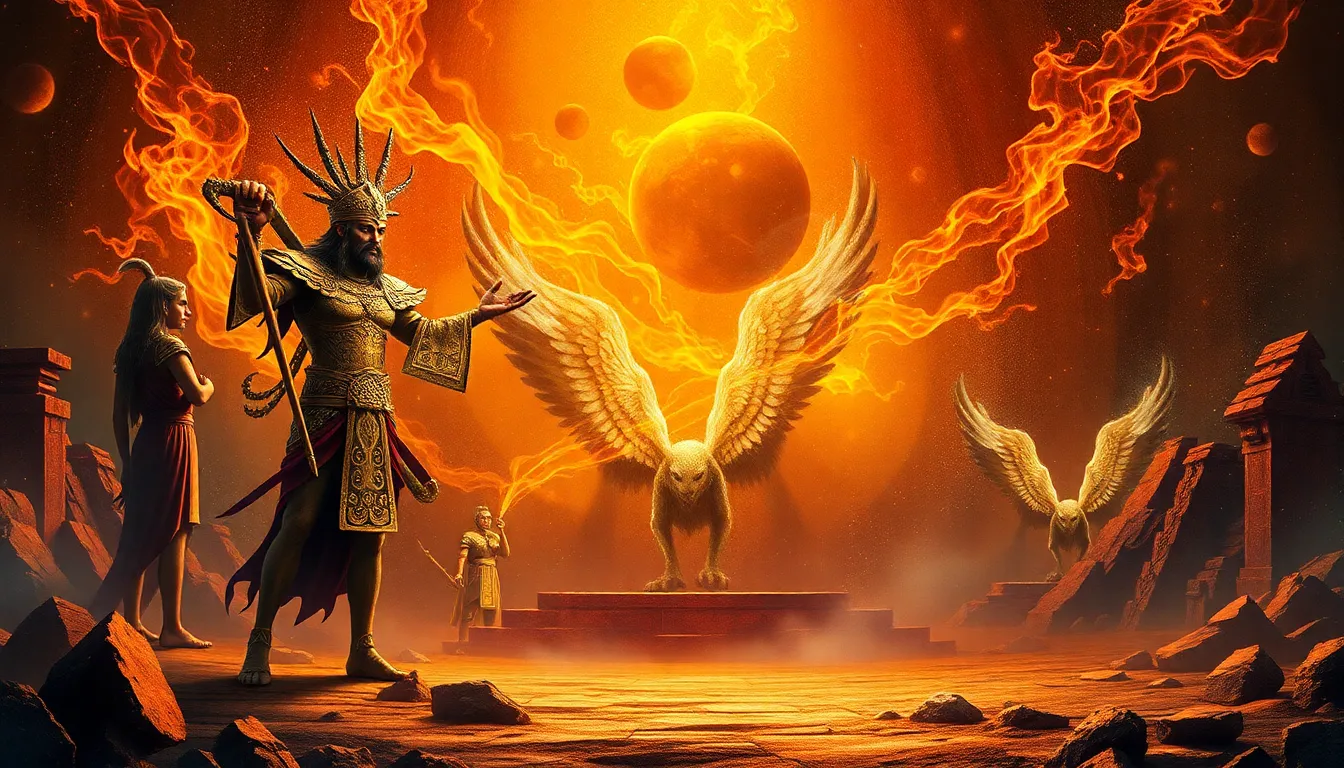The Flood Myths of the Indigenous Peoples: Wisdom from the Ancients
Introduction: Understanding the Significance of Flood Myths
Flood myths are a common thread woven through the tapestry of human culture, appearing in diverse forms across various civilizations. From the ancient Mesopotamian tales to the narratives of Indigenous peoples, these stories reflect a profound understanding of human experience, catastrophe, and renewal. Indigenous storytelling, rooted in oral tradition, serves not only to entertain but also to impart wisdom and moral lessons critical for survival and understanding of the world.
This article aims to explore the depth and breadth of flood myths among Indigenous peoples, highlighting the insights and teachings derived from these ancient narratives. Through examining specific stories, symbolic meanings, and contemporary relevance, we will uncover the rich heritage of wisdom that these myths convey.
The Universal Theme of Catastrophe and Renewal
Across cultures, flood myths frequently embody the themes of catastrophe, survival, and renewal. These narratives often detail the destruction of humanity and the ensuing regeneration of life. The symbolism of water is particularly significant in Indigenous cultures, representing both life-giving and destructive forces.
- Destruction: Floods are often depicted as punitive events, a response to the moral failings of humanity.
- Survival: The survivors of these floods are frequently portrayed as bearers of moral lessons, chosen by higher powers.
- Renewal: The aftermath of the flood brings new life, illustrating the cyclical nature of existence.
This cyclical view of destruction and rebirth is a significant aspect of Indigenous worldviews, emphasizing resilience and the interdependence of all living beings.
Case Study: The Anishinaabe Flood Story
One notable example of a flood myth is that of the Anishinaabe people, who recount a story of a great flood that was sent by the Creator to cleanse the earth. In this narrative, Nanabozho, a central figure, is tasked with preserving life during the deluge. He gathers various animals and creates a refuge, showcasing themes of cooperation and survival.
This myth serves as a moral lesson about the consequences of human actions and the importance of living in harmony with nature. The Anishinaabe view the flood not merely as a historical event but as a spiritual teaching relevant to their contemporary lives, emphasizing respect for the earth and responsibility towards one another.
The Mesopotamian Influence: Ties to Indigenous Narratives
Many Indigenous flood myths bear resemblance to ancient Near Eastern stories, such as the Epic of Gilgamesh and the biblical tale of Noah’s Ark. These narratives share common elements, including a divine warning, a chosen survivor, and the renewal of life post-catastrophe.
This influence highlights a blending of indigenous and universal themes, suggesting that these stories may have traveled and transformed across cultures. Such similarities prompt further exploration into how Indigenous narratives have adapted and integrated these overarching themes while maintaining unique cultural identities.
The Role of Animals in Flood Myths
Animals often play crucial roles in flood myths, serving as survivors, guides, or symbols of wisdom. Their presence underscores the deep connections Indigenous peoples have with the natural world.
- Northwest Coast Myths: In some stories, the raven is a central figure, often credited with bringing light and life after the flood.
- Native American Legends: Various animals, such as the otter or the beaver, embody traits of survival and resilience, teaching humans important lessons about adaptability.
These narratives emphasize coexistence and respect for nature, reminding us of our responsibilities towards the environment and other living beings.
Flood Myths as Environmental Warnings
Many flood myths reflect historical climate events, serving as warnings about the consequences of ecological imbalance. Indigenous peoples have long understood the rhythms of the earth, and their myths often encapsulate this wisdom.
In contemporary times, these narratives resonate even more strongly as the world grapples with climate change and environmental degradation. The teachings embedded in these stories encourage sustainable practices and respect for the natural cycles that sustain life.
Cultural Variations: A Comparative Study
A comparative study of flood myths across different Indigenous groups reveals a rich tapestry of themes, including sacrifice, survival, and community resilience. For instance:
- Native American Myths: Frequently emphasize the role of community and shared responsibility during crises.
- Aboriginal Australian Stories: Often incorporate Dreamtime narratives that connect the flood to the creation of the land.
- Pacific Islander Legends: Highlight the importance of navigation and the environment, often featuring great voyagers who survive floods.
These unique elements showcase the cultural diversity and the rich heritage of storytelling among Indigenous peoples.
The Role of Oral Tradition in Preserving Myths
Oral tradition has been vital in sustaining flood myths through generations, allowing these narratives to adapt while retaining their core teachings. However, colonialism has posed significant challenges to these storytelling practices, often leading to the loss of language and cultural heritage.
Efforts are underway to revitalize and preserve these ancient wisdoms today, with Indigenous communities working to reclaim their narratives and pass them on to future generations. This revitalization is crucial for cultural identity and continuity.
Lessons for Modern Society: Integrating Ancient Wisdom
The teachings found in flood myths hold valuable lessons for modern society. By integrating these insights, we can:
- Encourage sustainable practices that honor the earth.
- Foster respect for the environment and all living beings.
- Listen to Indigenous voices, whose knowledge is essential in contemporary discussions about ecology and sustainability.
Embracing these ancient wisdoms can guide us towards a more harmonious existence with nature, emphasizing the importance of community and shared responsibility.
Conclusion: Embracing Indigenous Wisdom for Future Generations
Flood myths of Indigenous peoples offer profound insights into the human experience, intertwining themes of catastrophe, survival, and renewal. Through these stories, we can glean important lessons about our relationship with the natural world and the cyclical nature of life. As we face contemporary challenges, embracing the wisdom of these ancient narratives can guide us towards a sustainable and respectful future. By honoring Indigenous voices and their stories, we can ensure that this valuable knowledge is preserved for generations to come.



